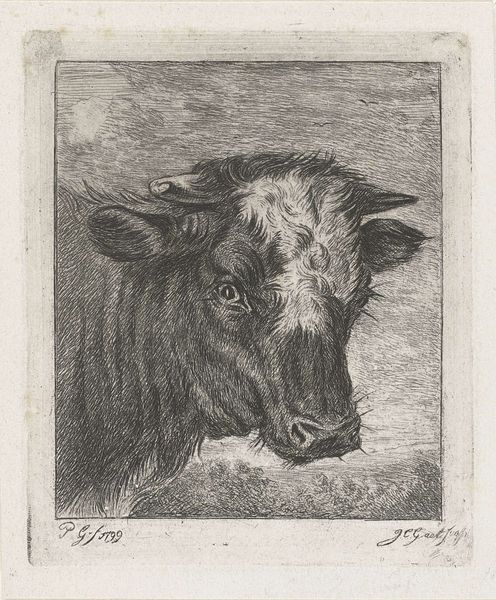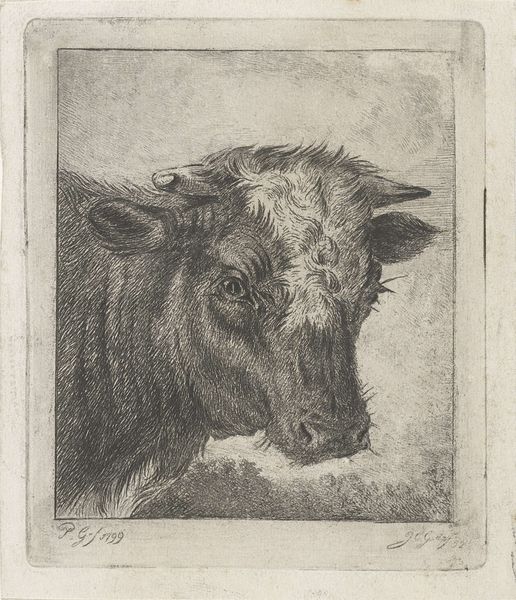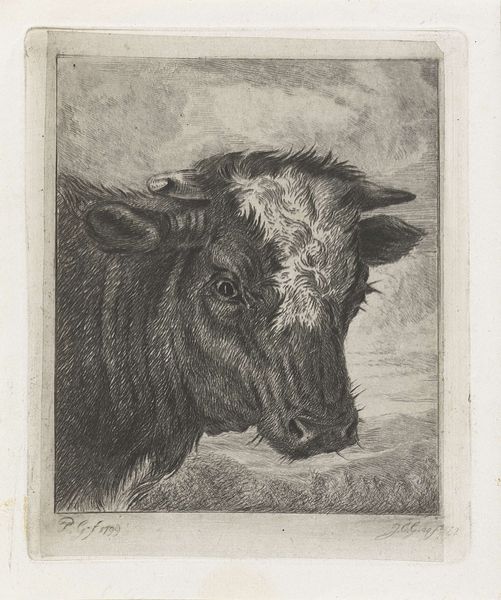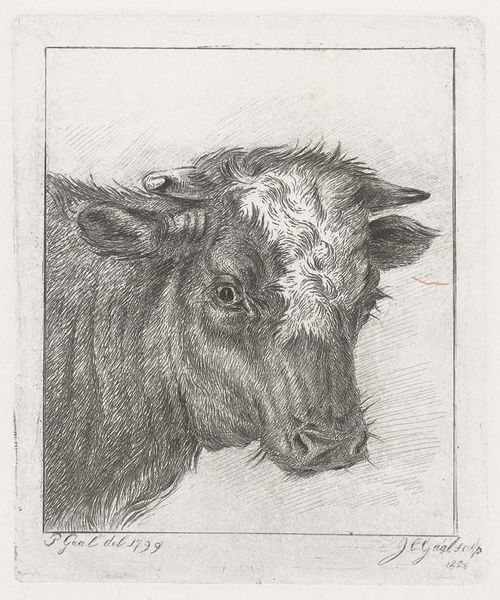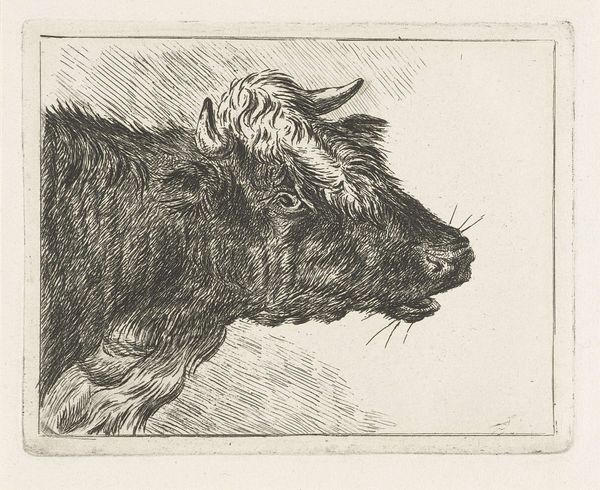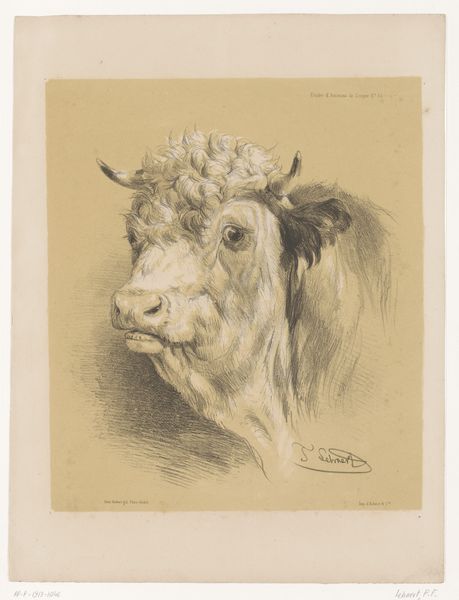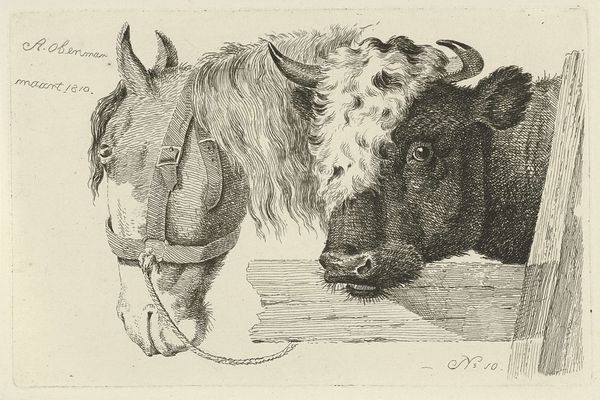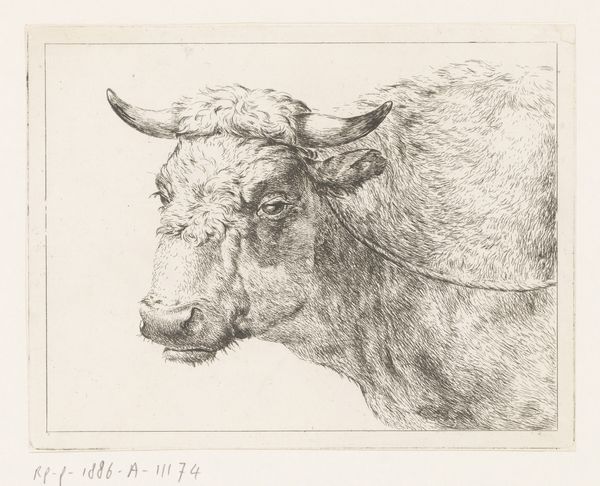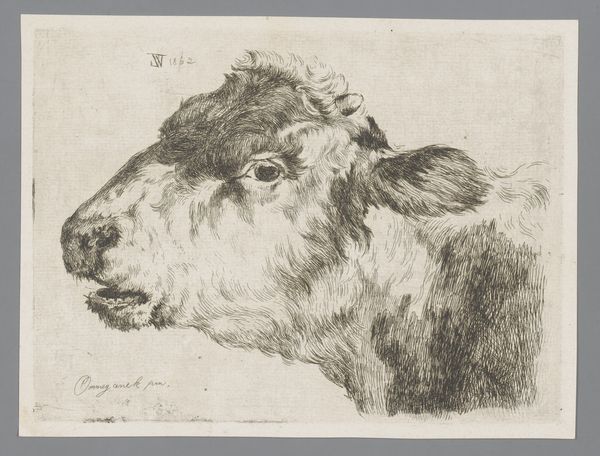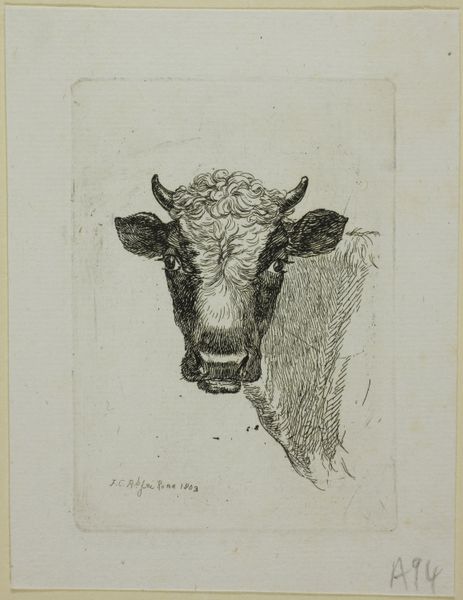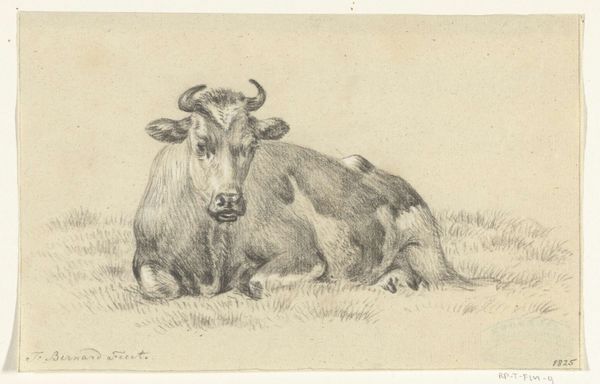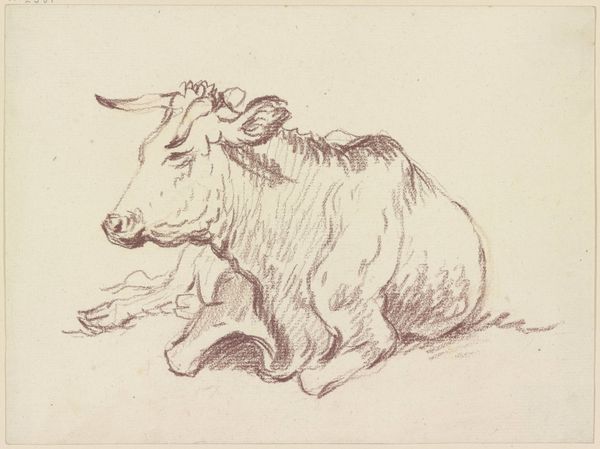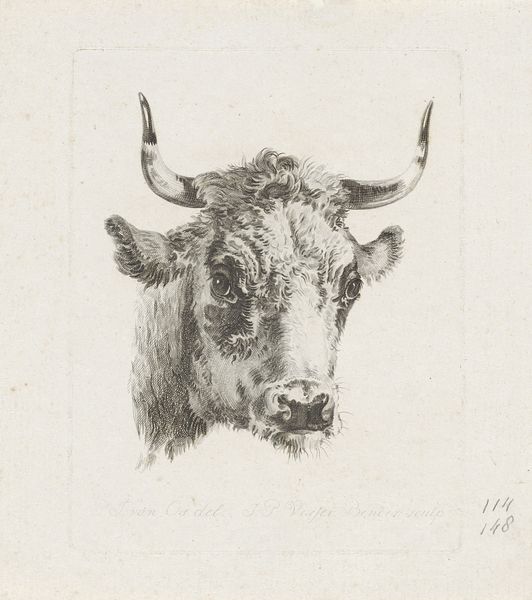
print, engraving
#
portrait
# print
#
line
#
engraving
#
realism
Dimensions: height 112 mm, width 93 mm
Copyright: Rijks Museum: Open Domain
Jacobus Cornelis Gaal created this etching of a cow's head, with white blaze, in the Netherlands sometime in the first half of the 19th century. The image appears to be a simple study of rural life, but it’s worth asking: what does it mean to represent agricultural animals during this time? The 19th century saw an unprecedented rise in industrialization and urbanization. Images like this reflect a nostalgic yearning for the agrarian past. It presents the Dutch countryside as a place of peace and plenty at a time of great social and economic upheaval. Gaal made this work with etching, a printmaking process ideal for producing images in large numbers. Etchings like this would have circulated as individual prints or in bound collections. As a museum piece today, the meaning of this artwork has shifted again. It is an institutional record of Dutch history, now appreciated as a work of art. To understand the various meanings of Gaal's etching, one can consult historical farm records, museum archives, and the artist's biography to better understand the social context of the image.
Comments
No comments
Be the first to comment and join the conversation on the ultimate creative platform.
